Quentin Tarantino, Spike Lee, Violence and Racism in The Last Days of Obama
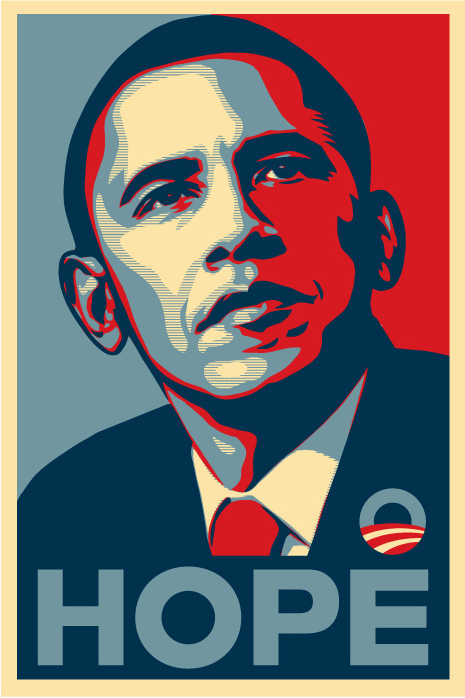
In November 2008, when Barack Obama was elected to the Presidency in a decisive, historic victory, pundits speculated that this would lead to a unifying of the nation and the inauguration of a “post-racial” America. As 2016 dawns in the thick of an explosive, unpredictable race for President Obama’s successor, it is clear that these predictions were remarkably off-base. Rather than relieving the United States of the hideous legacy of slavery and bringing together Americans of all creeds, colors, and classes, the reception to Barack Obama’s Presidency has made the nation more divisive, turbulent, and precarious than in almost any era since the Civil War. At the tail end of 2015, in a nation haunted by fears of both ISIS attacks and the achingly real specter of domestic gun violence, two controversial directors, Quentin Tarantino and Spike Lee, released disparate films which spoke to the nation’s traumas in the final years of Obama’s polarizing reign. Both filmmakers are divided by race, upbringing, and a mutual distaste towards each other, but each work of cinema simultaneously defines this brief, epochal period and transcends it.
Tarantino and Lee: Fearless Firebrands in an Age of CGI and Sequels
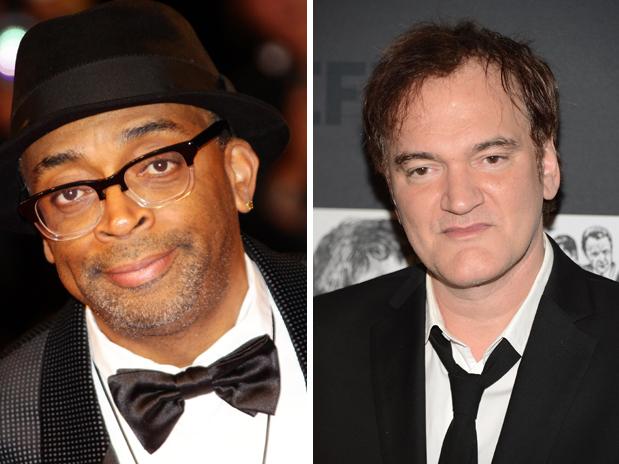
Quentin Tarantino and Spike Lee are two of the most iconic filmmakers to emerge from the boom of American Independent Film. This movement was most active between the years 1984 (when Jim Jarmusch’s Stranger Than Paradise proved to be a landmark) and 1994, when Tarantino’s own Pulp Fiction brought independent cinema to the masses, grossing over $100 Million on a mere $8 million budget. Both directors released innovative debut features in an age ruled by conservatism and a reactionary malaise (Lee’s She’s Gotta Have It in the heart of the Reagan years, and Tarantino’s Reservoir Dogs in the twilight of George H. W. Bush’s one-term Presidency). Both renegades came under fire for their cinema’s focus on race and uncompromising violence (the latter especially a Tarantino staple). As American cinema’s most prolific and prominent black filmmaker, Lee has made race in modern society a centerpiece of his films. Whether it is the sociology of historically black colleges (School Daze), race riots (his masterpiece Do the Right Thing), interracial relationships (Jungle Fever) or the impact of drug-dealing on black communities (Clockers), Lee ensured that his screenplays did not simply entertain, but provoked and instructed. It is the latter element that has alienated many, causing Lee’s detractors to lambaste his work as preachy and didactic. While Lee clearly wants his audience to walk away having learned something about both themselves and society, the aforementioned films’ streaks of humor, compassion, and pure cinematic joy make him an artist, not a lecturer.
While the subject of race is perhaps inevitable for the Morehouse-educated Lee, Tarantino has consistently been one of the rare white filmmakers to not only cast black actors in major roles, but to actually address the issue of race in his intricate, cinema-hungry scripts. His films’ blatant, frequent use of the “n-word” has been highly controversial, and has provoked the ire of Lee himself. This briefly led to a rift between Lee and acclaimed actor Samuel L. Jackson, who has become a mainstay in the output of both directors. While it is understandable why Lee would resent the Caucasian, Tennessee-born Tarantino using this historically loaded terminology, it is transparent that Tarantino evokes an empathy and understanding of black lives that few white directors possess. Even when cloaked in the genres of blaxploitation (1997’s Jackie Brown) and the “spaghetti Western” (2012’s Django Unchained), Tarantino crafted multifaceted roles for Pam Grier, Jamie Foxx, and the aforementioned Jackson, while delving into the complexities and contradictions inherent in the African-American experience.
Towards the end of 2015, after a terrifying three-year stretch of police brutality, endless mass shootings, and the rise of Donald Trump as a political force, Lee unveiled Chi-Raq (his most acclaimed work in years) and Tarantino released the ambitious The Hateful Eight, decked out with an overture (by master composer Ennio Morricone), intermission, and 70MM cinematography. The former film was loosely based on the ancient Greek play Lysistrata, while the latter is set in 1870s Wyoming. Despite these archaic origins, both films are urgently about the unhinged contemporary age, an era that is divided and hateful rather than united and peaceful. Both works speak to the continued relevance of filmmakers who began their careers decades in the past, and help form a cinematic portrait of these heady times.
Chi-Raq: Inner-City Chicago as a Microcosm of America During The Age of Obama
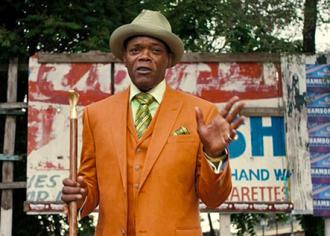
At the start of 2016, following a year of mass shootings and further racial unrest, President Obama tearfully unveiled (modest) gun control measures. In a nation with the highest prevalence of gun homicides on the planet, these executive actions should appear as common sense and inevitable, rather than the political firestorms they immediately became. One point made by anti-gun control zealots worth noting, however, is Obama’s focus on such one-off shooters as Dylan Roof and Adam Lanza, rather than the pervasive inner-city gun epidemic that has engulfed cities from Washington, D.C. to Oakland for decades.
In many ways, Chicago, Barack Obama’s adopted hometown and the setting of the launch of his political career, has become a poster child for this relentless violence. When compared to smaller cities such as Detroit, Baltimore, and St. Louis, Chicago’s per-capita homicide rate is fairly middling. When gauging the city’s gun murders by its overall numbers, however, the picture becomes disheartening. In recent years, there have been more homicides in The Windy City than in all New York’s Five Boroughs; this despite the fact that the latter’s population is almost three times as large as Chicago’s. Since 2001, the city’s murders have shockingly eclipsed those of the conflicts in Afghanistan and Iraq; this disquieting statistic and the metropolis’ culture of bloodshed has led to the blunt nickname of “Chi-Raq.”
This moniker is both the name of Spike Lee’s latest joint and the film’s South Side rapper protagonist (a superb, cast-against-type Nick Cannon). Following the potent one-two punch of the crackerjack heist thriller Inside Man and the heart-rending Hurricane Katrina documentary When the Levees Broke (both 2006), Lee foundered in the wilderness with a series of well-meaning but shapeless misfires. From Chi-Raq’s initial moments, scored to Cannon’s blazing jam “Pray 4 My City” and opening with the fiery PSA “THIS IS AN EMERGENCY,” Lee’s sense of social outrage has never been more clear-eyed and passionate. As the film surges into Samuel L. Jackson’s manic riffing, reprising his priceless narration in Do the Right Thing with a contemporary edge, the filmmaker’s ability to inject the humor and theatricality of the streets has returned in full force. Transplanting the action from Lee’s native Brooklyn to the gritty Midwestern environs of Chicago’s South Side results in a film about a specific time and place that is ultimately universal and timeless.
Updating the Greek play concerning women who refuse sex in order to stop their men from fighting needlessly, Lee has concocted a righteous feminist fable that bursts to the seams with social justice, biting satire, musicality, and a warm humanity that seeps into the bitter action when the viewer least expects. Barack Obama specifically is not a major concern of Lee’s dense, allusive, sprawling screenplay, but a laundry list of racially charged and violent incidents during the past several years are name-dropped. Prominent examples include Charleston shooter Dylan Roof, the strange, unsettling saga of Dr. Ben Carson’s presidential campaign, and the riots in Ferguson and Baltimore. In one pointed monologue (of which there are many), Miss Helen, indelibly played by Angela Bassett in her first Spike Lee Joint since 1992’s Malcolm X, notes that if “the white kids killed at Sandy Hook don’t lead to a change, why on earth would anyone care about inner-city African-American homicides?” It is clear that the government may be interested in curbing the violence that occurs in mostly white communities, but the violence in Englewood, Fruitvale, or East St. Louis provokes mere apathy from elected officials.
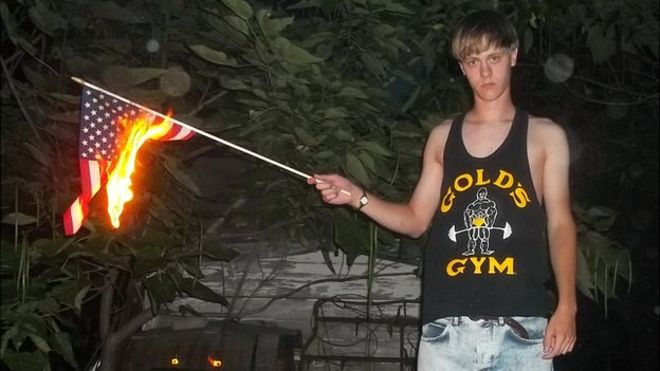
As Lee demonstrated so expertly in Do the Right Thing, black lives matter, and by probing the inner workings of a community, the filmmaker reveals that even the most maligned inner-city “ghettoes” contain vibrant, complex, and compassionate human beings. Lee fills his richly imagined Chicago with these achingly human characters, from the aforementioned titular rapper to a grieving mother (played with unvarnished heartbreak by Oscar-winning singer/actress Jennifer Hudson) to Lysistrata herself. As embodied by Teynoah Paris (a breakout in 2014’s underrated Dear White People), the Greek-inspired heroine is a swaggering neo-feminist, proud of her race and gender but distraught at the minefield her community has become. In a contemporary landscape that still condemns the black race and female gender alike, Lysistrata is a rebuke to the most conservative members of society. Her rallying of her “sisters” to convince the men to put down their guns by refusing them sex is of course unfathomable, if righteously satirical. Yet Lee is not aiming for realism here, but instead “magic realism,” potently depicting the misogyny and murderous impulses in a majority-black city that is a microcosm for the modern state of U.S. metropolises. As the film is a morality play peppered with song and dance and ripples of chortling humor, Lee’s narrative ends in a fashion that is neater than these tensions would actually play out in the real world.
Perhaps the sequence that is most relevant to the reality of the United States in 2016, and speaks to the director’s confusion and rage, is a somber funeral presided over by an incendiary, eloquent preacher (John Cusack.) Articulating the frustrations countless Americans have with their government and the status quo, from corruption and greed to racism and police brutality, this white preacher connects with the black churchgoers in stunning solidarity. Lee has often been disparaged as a reverse racist, condemning rather than cooperating with whites, but this scene explicitly makes clear that the concerns in this furious, humanity-soaked film transcend color, and engages the entire (divided) nation in an atypically contentious time.
The Hateful Eight: 2015 or The 1870s?
While race and ethnicity, whether African-Americans in Jackie Brown or European Jews in Inglourious Basterds, has proven to be a prime subject in Tarantino’s work, he never explored racism so potently and vividly than his deceptively B-movie-inspired Western Django Unchained. Concerning the efforts of a white bounty hunter to help a freed slave find his estranged wife on a Mississippi plantation, Tarantino fills the screen with his signature mix of gory violence, vicious humor, and cinephiliac references. This irreverent approach to the tragic real-life history of Amerian slavery led Lee himself to refuse to watch the film, decrying Tarantino’s efforts to depict slavery as a Sergio Leone-inspired Western. Despite Django’s genre-movie trappings, Tarantino’s condemnation of racism and solidarity with the African-American experience gives the film a sociological heft that transcends the limitations of the Western. If Lee had seen the film, it is likely that he would have enjoyed many of the Oscar-winning screenplay’s ideas, and cheered the righteous vengeance in the film’s bloody climax.
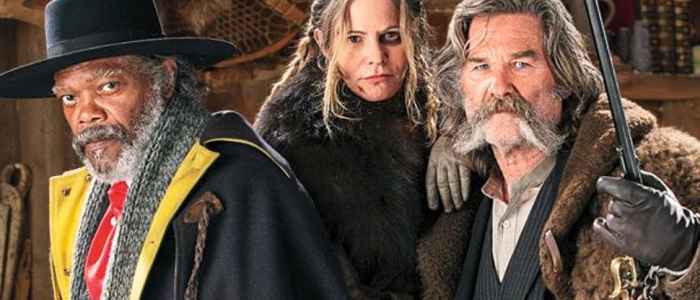
The Hateful Eight (2015), a combination of Western and Agatha Christie mystery, is even more explicitly a genre film, and the racial subtext may seem implicit. When delving into the deceptively complex screenplay, however, it is clear that Tarantino has much to say about race and gender not only in the film’s post-Civil War setting, but in today’s America. Following the Confederacy’s defeat and the subsequent emancipation of slaves, it may have been expected that the wounded nation would try to heal and come together in unification. Conversely, President Lincoln was assassinated, attempts at Reconstruction were disastrous, and the Klu Klux Klan emerged to counteract the newly freed African-Americans. Just as President Obama’s election in the midst of a crumbling economy and two costly wars did not lead to the nation turning a new leaf, the aftermath of the Civil War simply prolonged the United States’ deep chasms.
Tarantino’s film begins in a wicked blizzard in rural Wyoming. It is clear that the title is expository immediately, as the first characters we see are the gruff, brutal bounty hunter John Ruth (a never-better Kurt Russell) and the black-eyed female outlaw Daisy Domergue (a stealthily evil Jennifer Jason Leigh). Race takes center stage as the characters are joined by Marquis Warren, a notorious bounty hunter and Union hero, who just happens to be black (Samuel L. Jackson, proving yet again that his best work is with Tarantino). While in many ways he is just as ruthless as the aptly named Ruth, Warren boasts some moral credence through his wartime heroics and his connection with the “noble” Union forces. A fourth character is soon added, a notorious Southern racist (Justified’s Walton Goggins), who expectedly takes one look at Warren and is aghast and horrified.
As aforementioned, the United States in 2016 is still abound in racism and sexism, and the majority of the characters in The Hateful Eight are defined by how they react to both Warren and Darmagogue. It is fascinating that despite this fact, Tarantino does not make either character especially sympathetic. Throughout the film, the “n-word” is directed at Warren, while the sole major female in the movie is decked frequently and labeled with a dismissive “bitch.” This uncompromising, un-PC approach has led to much criticism, but it is also historically accurate. Where Tarantino goes a step further, delving treacherously into moral ambiguity, is in making Warren, and especially Domergue, duplicitous, murderous, and vindictive.
What Tarantino appears to be saying is that while discrimination and prejudice are indeed pervasive, in 1875 as much as 2015, there exists a plethora of morally bankrupt citizens of all races and genders across the vast United States. The complexity conveyed by Jackson and Leigh makes these multi-faceted characters a rich, fascinating balance between repugnance and nobility. While it is true that Jackson’s Warren is as barbaric and manipulative as the rest of the film’s unsavory motley crue, he is the most intelligent, crafty, and strangely enough, integrity-rich figure in the whole film. Operating by his own amoral code, Warren is regardless a figure for racial equality and outwits the clueless white racists. Similarly, Darmogogue is wily, heartless, and malevolent, but she simultaneously upends gender norms through her recalcitrance, relentless defiance, and uncompromising independence. It is telling that Tarantino makes the most memorable characters black and female respectively, and while his portrait of the nation is deeply flawed, it at least implies that the ugliness of Americans transcend simple labels.
In contrast to Chi-Raq, The Hateful Eight utterly lacks hope, warmth, or likable characters. While Django Unchained contained a surprising beating heart in the titular protagonist (Jamie Foxx)’s desire to reunite with his wife (a luminous Kerry Washington), Tarantino’s latest is grim and unsparing. Rather than celebrating the amorality of its characters (and implicitly all of American society), Tarantino’s devilishly funny but surprisingly serious screenplay tears apart the noble Western myth and reveals the nation as a mishmash of greed, violence, racism, and misogyny. In fact, The Hateful Eight easily could be transposed onto the current crop of GOP Candidates, with Ted Cruz, Carly Fiorina, Donald Trump, and Ben Carson easily fitting into the diverse, dubious cast of hellish renegades. In a time where the nation needed to heal, the United States simply festered in a cesspool of unpleasantness. Nearly 150 years later, the country is sadly perpetuating this dreadful mistake. Tarantino never forces contemporary parallels, because none are needed; the result is a film as distinctly of its time as Chi-Raq, and both prove that neither filmmaker have lost their touch in checking the nation’s pulse.
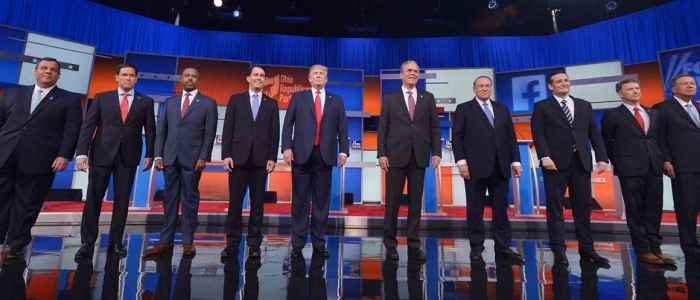
While the films have received varying acclaim (Lee’s latest has been hailed his best in a decade, while The Hateful Eight has had a perplexingly mixed reaction), both are clearly the work of their inimitable, iconic creators. The concerns of each filmmaker are similar to the themes they have been exploring for over two decades, and the continued relevance of these topics is a testament to the pervasiveness of violence, racism, and division in the United States. Both directors’ insistence on these subjects are key indicators that these malignant aspects of society are never going to dissipate.
Tarantino and Lee may have started their propulsive film careers in the George H.W. Bush and Ronald Reagan years, respectively, but in the twilight of Obama and the dawn of Trump, both iconoclasts are as vital and necessary in the American landscape as ever. Chi-Raq and The Hateful Eight alike prove this with a cinematic vengeance.
Works Cited
Biskind, Peter. Down and Dirty Pictures, 2003 Simon & Schuster.
Collins, K. Austin. “Stakes is High: On Spike Lee’s Chi-Raq” Los Angeles Review of Books, January 2016.
Sims, David “The Hateful Eight is a Gory Epic in Search of Meaning.” The Atlantic, December 2015.
Zornick, George. “Whatever Happened to Gun Control?” The Nation, September 2014.
What do you think? Leave a comment.











Hateful Eight was great. Loved it. Very funny.
I thought it was below par for a QT film. Still very good, and exceptional in places, but I left it thinking it could have been so much more.
Most people seem to love it though.
In my opinion it’s his best film since Pulp Fiction.
Is America really ready for this debate?
We re not ready for a serious debate – better to use it for propaganda purposes. Much safer.
I usually find Spike a rancorous old bore, but nowadays he’s got a point.
Depends what you think his point is as for his statements on the oscars controversy. That talented black actors who delivered excellent performances and were overlooked in favour of white actors because the whole thing is structurally racist, or that there should be black actors included regardless of merit because otherwise its racist. I cant think of any outstanding performance that seem to have been omitted, maybe one or two margin calls like Elba and Jordan but there will be plenty of actors who were margin calls and got overlooked.
As we start 2016 maybe we should all examine our consciences and try and have compassion for all people regardless of colour, profession, religion, nationality, gender or political views. How much free will do any of us have really in who we are?
I don’t think it’s fair to portray this like it’s Obama who racially divided America. What did he do? It’s like saying ‘because he’s not the majority, it divided us on principle.’
Let me clarify that I do not believe that it is Obama who divided America himself; it’s the ridiculous reaction from his critics on both the left and right.
Following the Confederacy’s defeat and the subsequent emancipation of slaves, it may have been expected that the wounded nation would try to heal and come together in unification. Conversely, President Lincoln was assassinated, attempts at Reconstruction were disastrous, and the Klu Klux Klan emerged to counteract the newly freed African-Americans. Just as President Obama’s election in the midst of a crumbling economy and two costly wars did not lead to the nation turning a new leaf, the aftermath of the Civil War simply prolonged the United States’ deep chasms. Agreed 100%. Samuel has astutely noted with great style and vocabulary that there are efforts made to “counteract” strides in race relations as depicted in Tarantino’s and Lee’s work.
Race relations are like Newton’s Third Law of Motion: to every action there is an equal and opposite reaction. When Obama was elected, pundits predicted entering a post-racial era. Eight years later, that is clearly not where we are as evidenced by the polarization of voters supporting frontrunners like Trump and Sanders. If Hilary does win and becomes the first female President, we can expect more of the same two steps forward, three steps backward scenario.
However, this does not mean we should not make attempts to move towards racial equity. It only means that one requires staying power and determination to keep moving forward in the face of resistance and not just so directors can keep making movies : )
Mr.Tarantino is above all an artist who loves the English language. Whatever words come out of his characters’ mouths — be they punchy riffs or long, rolling stanzas — those words nearly always possess Power, and so become an often violent poetry, poetry which entertains, pisses us off, and ultimately provokes widespread discussion about social issues that are overdue for a public airing.
100% correct.
How about it’s about damn time you made another decent movie Mr Tarantino? Hateful Eight was shit. Unlike Pulp Fiction where you remember the dialog and not the violence, here you just remember the violence. Ok for a download, I would have been gutted if I went to pay to watch it.
Put your flags away. We make the world what it is, and we can all do better.
When Spike talks, people listen!
The Academy will be praying for some great performances by black actors this year, that’s for sure.
Idris Elba , samuel l jackson , the cast of girlhood,Chirac,Boyega,michael b jordan,etal ;none of these performances are in a qualitively different league from the nominations that did make it.There is only one or two `great` performances any year;Nominations are industry backed and promoted from the start.The fact your unaware of great black performances is they are not being promoted by the industry to the same extent ;that`s the point. NOTHING TO DO WITH PRAYING.
QT often looks as though he’s forgotten to put his teeth in.
Great piece on art and social commentary-it gives you a considerable amount to contemplate. Thanks.
The country has been taken over by interests who do not represent the people or notions of equality, fairness or justice.
Racism is an ugly thread that runs throughout US history and continues today. The treatment of Native Americans was despicable and remains so today. They live a third world shadow existence. The treatment of black Americans continues to be a shameful middle finger in the face of all the hypocritical rhetoric about American freedom and justice. Trump’s plans for Muslims if- God forbid he gets elected- is entirely consistent with the treatment of non-whites. Look at the vile racist treatment of Japanese Americans in WW2.
I suggest that the Japanese who were interned in the USA and Canada did rather better than the soldiers of the UK,the Commonwealth,the US, Canada, the Netherlands and the thousands of Asians who suffered unspeakable cruelty.
Although a controversial piece, I thought it was well written despite what my opinions are. It’s scary and sometimes difficult to put ourselves out there as writers to be subjected towards a lot of criticism. Well done.
Does anyone else find it ironic, that if anything has been conducive to hate inducing it could be Tarantino’s particular brand of cinematic ultra-violence?
A wonderful read and very enjoyable. I like your comment that it is necessary to have directors such as Lee and Tarantino to bring important issues that historically and in present circumstances continues to challenge our society. While most people do not see films as a source of education, only entertainment, but the truth is, they are a source of knowledge, even in their fictitious form. If the directors have done enough research, they are able to bring important elements of historical truth that can be entertaining and educational. Having said that, I believe it is also important for the film makers to show a balance in their work. By that I mean to demonstrate why certain decisions were made by dominant classes and to what degree their actions were justified based on time and geography and why. While a director or a moviegoer might say this is not the “job” or function of a film, it simply is not true, because if directors or writers of a particular film aim to bring to the audience an important issue that effected us historically and continue to do so, they also have the responsibility to present a well balance message.
You’ve opened my eyes to issues I have never truly perceived. I tend to think of film being aloof from reality, or even as an escape therefrom. You’ve proven that cinema and everyday life are intricately interwoven. Nice work!
Ecellent. Thank you.
This definitely is a time capsule expressing a certain attitude of the time.